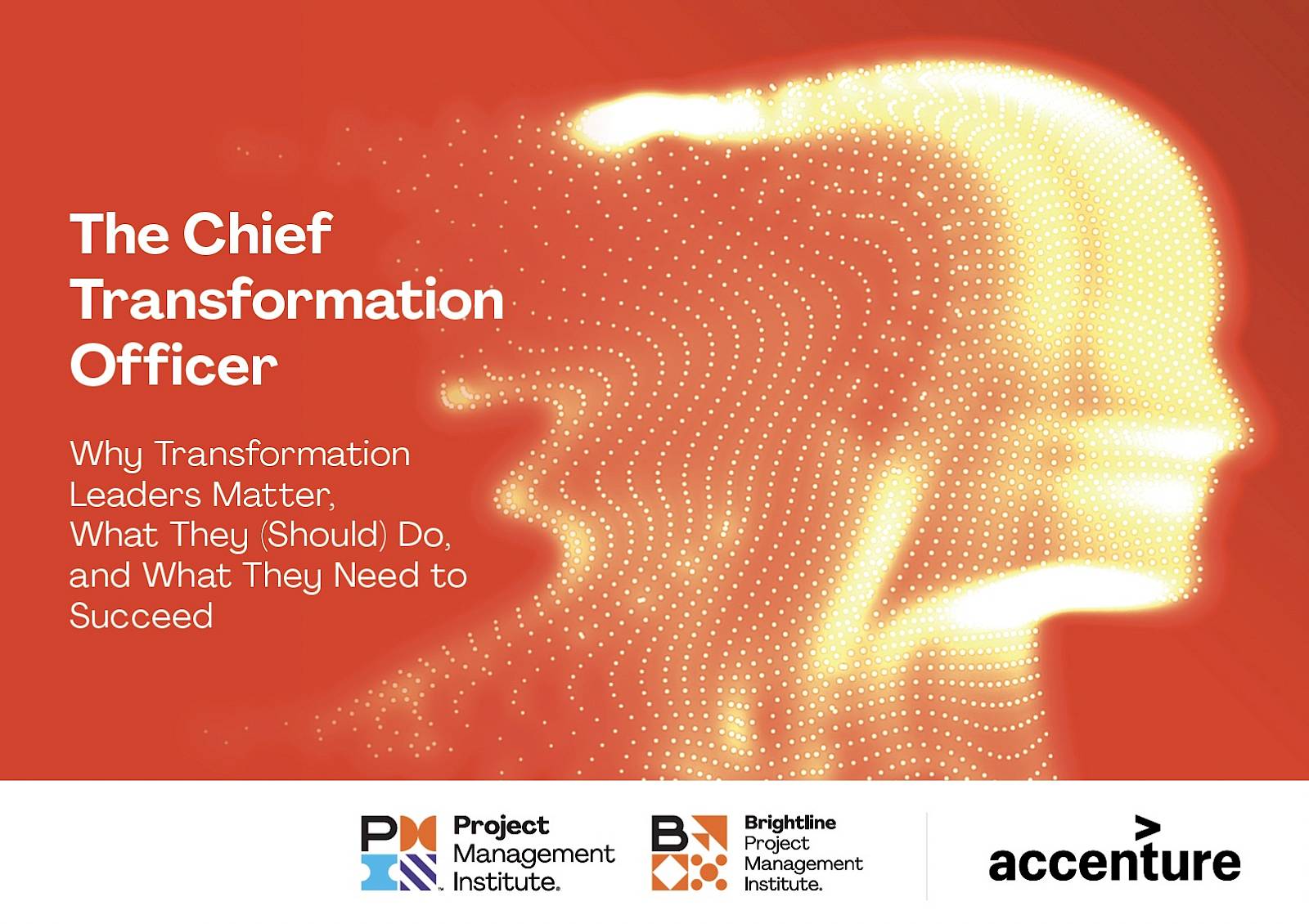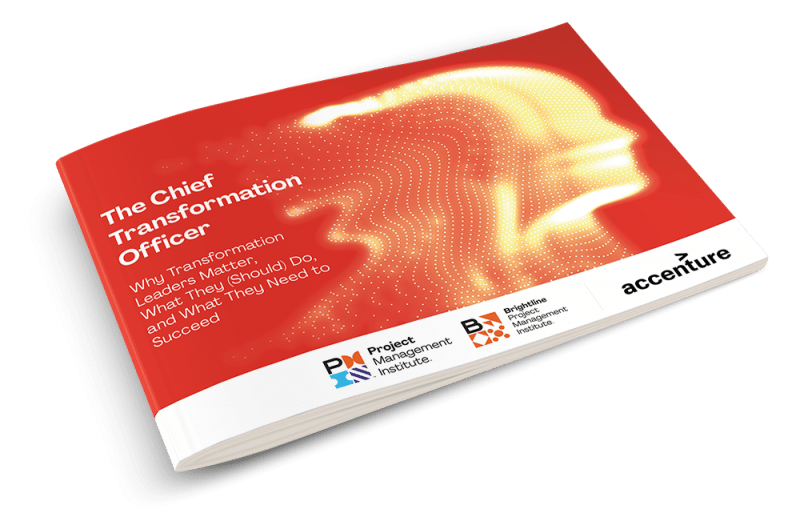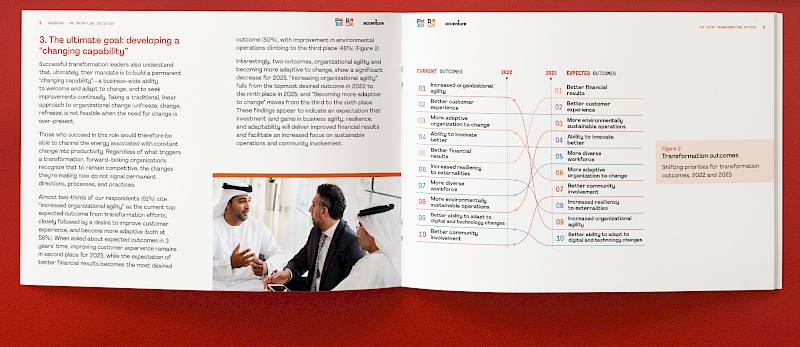
The Chief Transformation Officer
Why Transformation Leaders Matter, What They (Should) Do, and What They Need to Succeed
In this report, Project Management Institute (PMI) and Accenture examine how the individuals who take on this emerging role drive effective enterprise transformation and ultimately build a company-wide “changing capability.” Our findings also illuminate the skills and talents a Chief Transformation Officer needs to excel, and the conditions that set them up for success.
 Table of Contents
Table of Contents
The transformation imperative
Framing the job: the factors driving transformation
The ultimate goal: developing a “changing capability”
The traits that best serve a chief transformation officer
Setting up for success: the office and the practices
The way forward
Foreword
The C-suite is expanding again, this time to make room for a new permanent role: the chief transformation officer (CTO). This position has emerged as companies have increasingly engaged in enterprise transformations—multiple, concurrent, technology-powered reinvention initiatives designed to support constant innovation.
The depth, scope, and complexity of enterprise transformations explain why the new role is necessary. These extraordinary change efforts are driven by multiple forces, including competitive pressures, blurring industry boundaries, residual pandemic effects, evolving geopolitical dynamics, and rapidly advancing customer expectations. They’re equally driven by the astounding possibilities that today’s (and tomorrow’s) technologies offer. As such, their primary objectives continuously evolve. They are also inherently multifaceted. They are simultaneously far-reaching in vision and pragmatic in execution. They are flexible and schedule-driven, value-focused and explorative. They affect the activities of a single worker in a single department and the operations of entire business ecosystems.
Managing these dynamic and divergent forces requires a versatile leader. This individual must be able to understand and respect diverse stakeholder points of view, and yet align all parties in pursuit of greater goals. To do so, the CTO must also be able to build trust in the process, so that stakeholders engage as owners and work to collaboratively drive change, rather than feeling that change is happening “to them.” Ultimately, the transformation leader must be able to mobilize the power that lies at the intersection of technology and human creativity, complexity, passion, and energy to build a permanent, company-wide “changing capability.”
Project Management Institute (PMI), in collaboration with Accenture Research, has examined this emerging role, and in this report we provide a high-level view of the qualities that best suit those who would hold it. We also outline the support the position needs to foster success. Among our findings: the benefits of having the CTO report directly to the chief executive officer (CEO); the importance of trusted partners; and the value of establishing a Transformation Office.
Watch the Webinar
The webinar dove deeper into the research findings alongside experts from Accenture and guest panelists.
Published on 15 September 2022, by Brightline Initiative, Accenture

